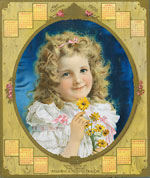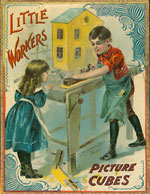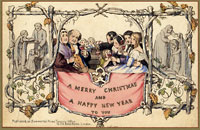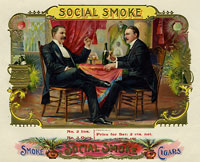Exceptional Ephemera
The Grossman Collection of Ephemera at Winterthur
By Nicholas A. Basbanes  Nicholas A. Basbanes recently received a National Endowment for the Humanities fellowship to work on his book on paper, which is forthcoming from Knopf. His most recent book is Editions & Impressions, a collection of essays. His other works include the acclaimed A Gentle Madness, Every Book Its Reader, Patience & Fortitude, Among the Gently Mad, and A Splendor of Letters.
Nicholas A. Basbanes recently received a National Endowment for the Humanities fellowship to work on his book on paper, which is forthcoming from Knopf. His most recent book is Editions & Impressions, a collection of essays. His other works include the acclaimed A Gentle Madness, Every Book Its Reader, Patience & Fortitude, Among the Gently Mad, and A Splendor of Letters.
Ephemera, as we all know, is a genre of collecting that embraces a multitude of printed objects never intended by their makers to last the long haul, but deciding what is worth paying good money to acquire, and what indeed is collectible in the first instance, is not so clear cut.
When I asked the master ephemera collector John Grossman of Tucson, Arizona, during a recent interview for a working guideline, and later posed the same question to E. Richard McKinstry of the Winterthur Library in Delaware, where Grossman’s vast accumulation of a quarter-million pieces are now on extended loan, both laughed, prompting me to suggest half-seriously what the Supreme Court Justice Potter Stewart offered in 1964 when pressed to define hard-core pornography. “I know it,” the judge said, “when I see it.”
For Grossman, a retired commercial artist and graphic designer formerly based in San Francisco, the rule of thumb over three decades of determined collecting was to pursue material that represented the development of chromolithography, a multi-color method of printing that began to emerge in the early decades of the nineteenth century as a fresh new way to promote goods and services, but branched out into a variety of areas with mass-market appeal.
“One way to start a collection like this is to begin with a time period,” Grossman said, and while he gives the years 1820 to 1920 for his parameters, he readily admits to having bent the boundaries occasionally in either direction. But as to documenting ephemera, there really is no way, ultimately, to codify it precisely, Grossman agreed.
“Stamp collectors know every last stamp in existence,” he said. “Each one has a number, it’s listed in a catalog, along with all the particulars and all the variations. But there is no possible way that you can do that with this kind of material, because it was never produced according to any master plan. Nobody knows how many calendars were designed, or how many cigar box labels, or trade cards, or valentines there were. That’s why it’s always going to be a process of discovery.”
A short list Grossman established for what he did acquire includes calendars, cigar box labels, trade cards, and valentines, to be sure, but also greeting cards, calling cards, postcards, theater tickets, paper dolls, sheet music, hand fans, even early grocery bags. But whatever the intended function any of these objects may have been, or the audience targeted, it was all secondary to the imagery printed on the surface, which invariably depicts visually on paper a rich variety of customs, attitudes, and ideals of Victorian and Edwardian times in the United States and England.
Grossman dates his activity as an ephemera collector to a day in 1974 when he was visiting an antiques shop in Port Costa, California, and found himself attracted to some pieces of printed memorabilia. “I bought them on the spot,” he recalled. “Right away I was hooked. This really shouldn’t have come as any huge surprise to anyone who knows me, I suppose, since I collected everything in sight as a kid growing up in Iowa. But this material had a very special appeal to me as a professional artist. The graphics, the lettering—it was magical, and it just caught my eye. I had to have more.”












